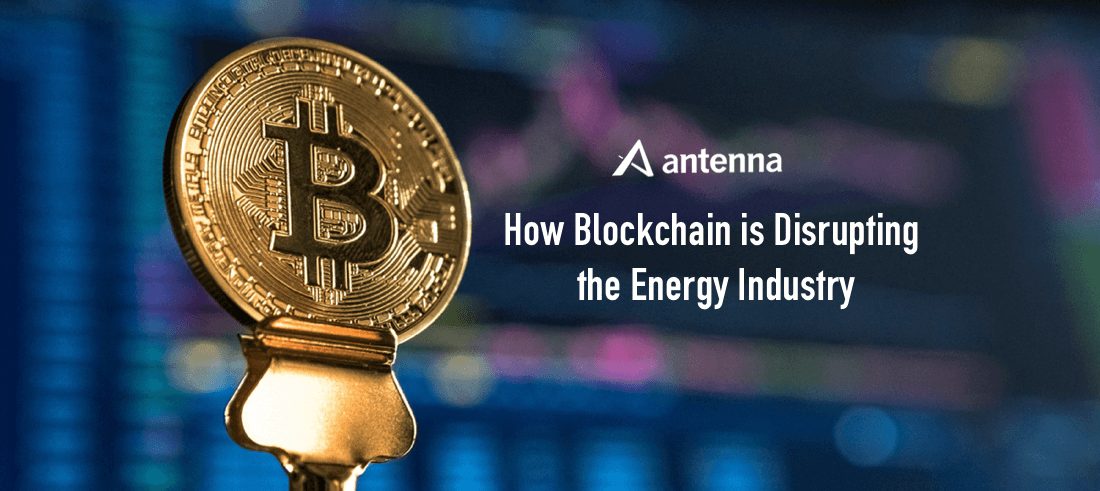
Since the 2008 roll-out of bitcoin, the virtual cryptocurrency system powered by blockchain technology, blockchain applications have expanded across sectors and have more recently become one of the most popular and commonly talked about trends in the cleantech industry.
As mentioned in our previous blog post on the top cleantech trends of 2018, blockchain will have a major impact on the energy sector. According to the Energy Web Foundation, an initiative of the Rocky Mountain Institute, blockchain technology has the potential to disrupt the global energy industry as the trend towards digitization continues and more distributed energy resources (DERs), renewable energy, and microgrid services are incorporated into the energy mix. As companies compete in this emerging sector, there are regulatory barriers that will need to be overcome: a more complex, digitized and democratic grid doesn’t exactly mesh well with the business model of large regulated legacy utilities. But as distributed solar energy, battery storage, EV charging stations, and connected consumer devices like the Nest smart thermostat make our grid more complex, blockchain’s potential to help to manage these grid resources is becoming increasingly interesting to stakeholders across the energy and utility value chain.
We’re already seeing large investments in technology at the intersection of blockchain and energy. According to Greentech Media, between Q2 2017 and Q1 2018, over $300 million was invested in energy blockchain startups from venture capital firms, corporate venture arms and initial coin offerings (ICOs). We’ve also seen a steady stream of announcements from all types of utilities that are planning to deploy energy blockchain pilot projects.
From peer-to-peer energy trading to managing supply and demand to renewable energy cryptocurrencies, to EV charging payment schemes, to grid security and beyond, the innovation is happening all around us. Here’s a look at some of the organizations and projects that stand out to us:
- Grid Singularity, an Austrian blockchain technology developer, has partnered with the Rocky Mountain Institute to form the Energy Web Foundation, a non-profit organization focused on the development of blockchain technology across the energy sector. The Energy Web Foundation is convening a foundational ecosystem of users, developers and infrastructure providers for the advancement of blockchain in the sector. Additionally, they are defining blockchain use cases, building a blockchain platform for the energy sector and educating the public. Utilities and startups are turning to the Energy Web Foundation to optimize the potential of blockchain technology to “reduce transaction costs in the energy sector, enable active participation of a larger number of market participants (consumers and devices) and, as a consequence, accelerate the transition towards a cleaner, more resilient and more cost-effective system.”
- Chicago-based Omega Grid is implementing blockchain for electric utilities. The distributed software platform was selected in the summer of 2017 by Fortune 500 accelerator Ameren with a goal of removing the risk of distributed generation for utilities, encouraging energy investment by property owners and managing the economics of distributed generation and storage. Moving forward, Omega Grid will provide its blockchain software to Burlington, Vermont’s municipal utility as it works become the first to use blockchain to manage supply and demand in real-time. The technology can be used to support EV charging, peer-to-peer energy trading and distribution management.
- Brooklyn-based LO3 Energy is revolutionizing the way energy is bought and traded with their transaction network, Exergy. This blockchain technology platform facilitates the secure purchasing of energy by commercial businesses. Using grid-connected hardware, Exergy generates, controls and secures the data required to procure power at an affordable price. While there is hype around cryptocurrencies like bitcoin or Ether, which have many different applications, LO3 Energy has created its own blockchain architecture. Through a bottom-up approach, they have developed the XRG token, a cryptocurrency designed to facilitate distribution of energy at the grid level.
- Power Ledger and WePower are two notable blockchain technology companies developing their own take on peer-to-peer energy trading marketplaces, and both are touting pilot projects around the world. The companies are particularly notable for their wildly successful ICO campaigns, where Power Ledger raised $34 million and WePower raised $40 million.
- Blockchain technology has entered the e-mobility space and sharing economy with Share&Charge, an open and decentralized network that connects electric vehicle owners with private and public charging stations. Share&Charge was launched by Innogy SE, a subsidiary of RWE, Germany’s second largest energy conglomerate. The Innogy Innovation Hub has installed hundreds of EV charging stations all over Germany. Using the Share&Charge app, which runs on Ethereum, electric vehicle users can locate and purchase energy from these blockchain-enabled charging stations. The app also permits individuals with residential charging stations to rent out their home charging station to those looking for a place to charge their car through a secure and transparent platform. These secure, peer-to-peer transactions are completed through a platform with 1,000 active charging stations across Germany.
- Seattle-based company Drift operates a peer-to-peer marketplace that lets residential, business and commercial customers buy directly from local renewable energy producers or hydroelectric plants. Drift has been running a successful program with ConEdison in New York over the past year. While Drift does not use blockchain technology at this time, they have used many concepts from blockchain to create their peer-to-peer retail energy trading marketplace and are regularly cited in the energy blockchain conversation. Building a blockchain is complex and expensive, and once operational, is an extremely energy-intensive process. So, Drift NOT using blockchain is particularly notable for us as it begs the question: when and why is a blockchain required?
These are just a few examples of blockchain applications in the energy and utility space. It is important to remember that there is still a lot of work to be done to figure out the right applications in the energy sector and to understand where and how value will be created. We’ll be in Berlin this week at EventHorizon—the Global Summit on Blockchain in the Energy Sector (April 17-19). We hope to see you there!
